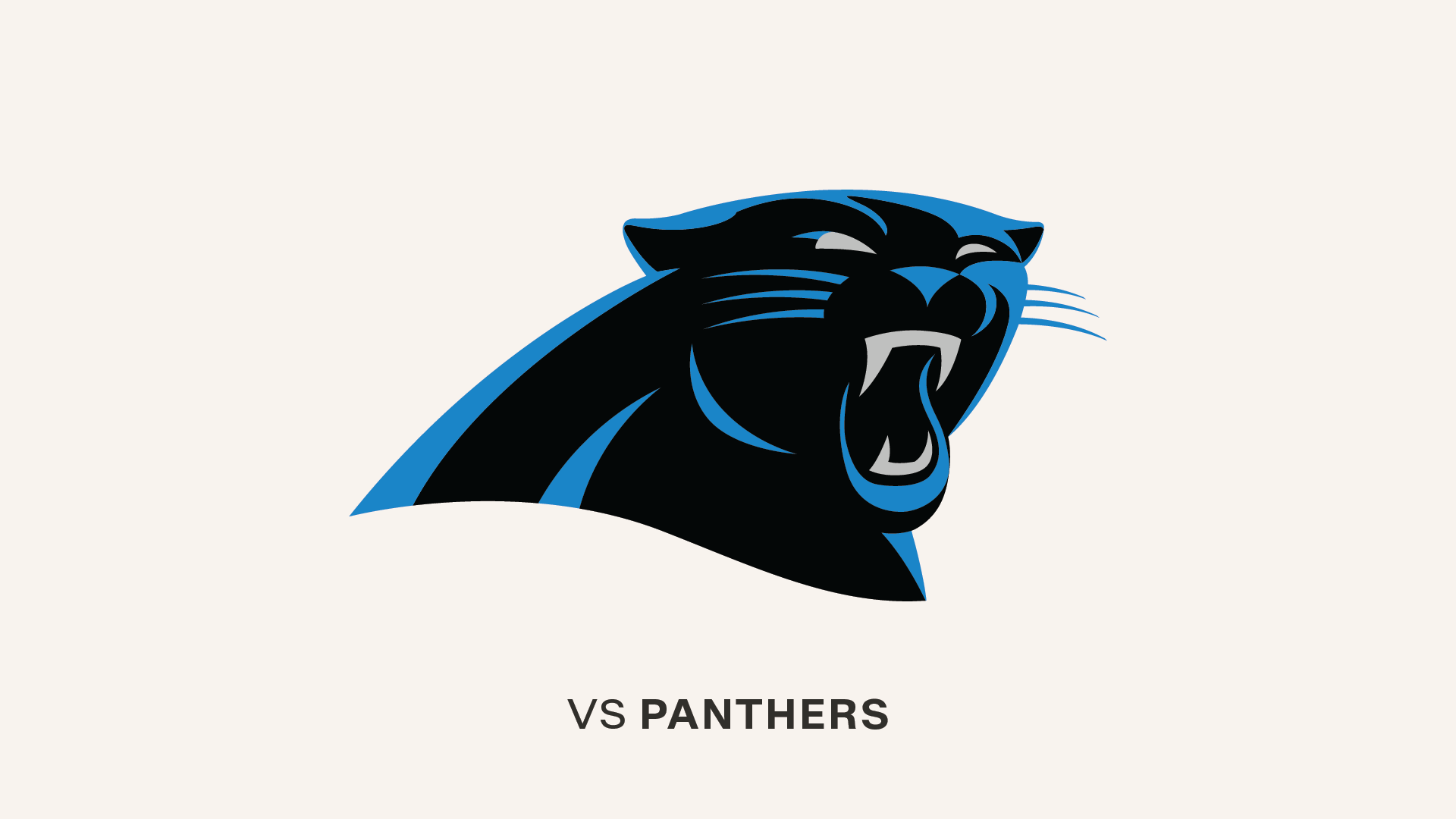Last November, thanks to a response regarding his approach to game-planning, Dirk Koetter was briefly labeled as an "anti-analytics" coach. When it comes to drawing up his play sheet for a specific opponent, Koetter values breaking down tape of that opponent over studying a page of team statistics.
In reality – and has gradually become clear over his two seasons with the Buccaneers, first as offensive coordinator and now as head coach – Koetter uses statistical analysis as much as any coach. Perhaps more than some. In particular, he has studied and distilled the factors that are most correlated with winning and regularly presents his team with a list of statistical goals before a game.
The distinction, as is always the case with statistics, is how they are wielded. Numbers can be illuminating, even predictive. For Koetter, they will never take the place of the scouting he can do with his own eyes, but they can assist in that process.
That's our goal with Football Geekery. Each week, we're going to give you a sampling of statistical and/or historical analysis, hopefully in a way that is relevant to the Buccaneers' current state of affairs. This week, we note that wide receiver Mike Evans is the NFL's leader in receiving first downs and break down that accomplishment in a number of ways. We also look into a strange combination of defensive rankings for the Carolina Panthers, this week's opponent. Finally, we track the three-year follow-up trends of teams that have finished 2-14 or worse.
**
1. Moving the Chains
On Thursday, we noted that wide receiver Mike Evans appears to be a lock to lead the NFL in receiving first downs in 2016. He has a larger lead over the player in second place than that player has over the player in 11th. Here are the top five producers of first downs in the passing game through 15 games:
|
Player |
Team |
FDs |
|
Buccaneers |
77 |
|
Steelers |
64 |
|
Giants |
61 |
|
Colts |
60 |
|
Packers |
59 |
Evans has one more game to try to pad his lead over second place, which will most likely be occupied by Pittsburgh's Antonio Brown. Brown led the league in this category in 2014 and finished second to Atlanta's Julio Jones last year. Evans will be the first Buccaneer ever to lead the league in receiving first downs, at least through the 1994 season, for which data on this topic is available.
If Evans can indeed widen his lead over Brown, he would take this category by the second-largest margin ever, and by the largest margin in 14 years. Here are the five players who have led the NFL in receiving first downs by the largest margins since data has been available:
|
Season |
Leader |
Team |
FDs |
Second |
Team |
FDs |
Margin |
|
2002 |
Marvin Harrison |
IND |
92 |
Torry Holt |
STL |
69 |
23 |
|
2012 |
Calvin Johnson |
DET |
92 |
Andre Johnson |
HOU |
79 |
13 |
|
2008 |
Andre Johnson |
HOU |
79 |
Tony Gonzalez |
KC |
67 |
12 |
|
2015 |
Julio Jones |
ATL |
93 |
Antonio Brown |
PIT |
84 |
9 |
|
2014 |
Antonio Brown |
PIT |
85 |
Julio Jones |
ATL |
76 |
9 |
Evans has already set the Buccaneer single-season record in this category (again, with data available through 1994) and not just barely. With a game to play he already has 10 more first downs on receptions in a single season than any other player in team history:
|
Player |
Season |
FDs |
|
2016 |
77 |
|
2001 |
67 |
|
2015 |
63 |
|
2012 |
61 |
|
5t. Antonio Bryant |
2008 |
60 |
|
5t. Vincent Jackson |
2013 |
60 |
Remarkably, in just three seasons, Evans has already nearly claimed the career mark in receiving first downs for the Buccaneers. He'll likely remain in third place through the end of this campaign but will be poised to move to the top early in 2017. Here are the top five producers of first downs in team history (through 1994):
|
Player |
Seasons |
FDs |
|
2012-16 |
207 |
|
2000-03 |
202 |
|
2014-16 |
186 |
|
2004-08 |
169 |
|
2009-09 |
142 |
Evans is fourth in the NFL in this category in the three seasons since he was drafted seventh overall in 2014, just ahead of his fellow '14 first-rounder, Odell Beckham, Jr. of the New York Giants. Here are the NFL's top five in receiving first downs since 2014:
|
Player |
Team |
FDs |
|
Steelers |
233 |
|
Falcons |
227 |
|
Texans |
190 |
|
Buccaneers |
186 |
|
Giants |
185 |
Evans is averaging just over five receiving first downs per game in 2016. If he can beat that average by one in Sunday's season finale, he'll finish with one of the top 10 seasons on record in the NFL in that category. Here are the top 10:
|
Player |
Team |
Season |
FDs |
|
Falcons |
2015 |
93 |
|
2t. Marvin Harrison |
Colts |
2002 |
92 |
|
2t. Calvin Johnson |
Lions |
2012 |
92 |
|
Lions |
1995 |
90 |
|
Cowboys |
1995 |
88 |
|
Jaguars |
1999 |
86 |
|
Steelers |
2014 |
85 |
|
8t. Antonio Brown |
Steelers |
2015 |
84 |
|
8t. Torry Holt |
Rams |
2003 |
84 |
|
Texans |
2015 |
83 |
Evans has a total of 91 catches on the season, which means all but 14 of them have produced first downs. He leads the NFL in percentage of receptions that result in first downs:
|
Player |
Team |
Recs. |
FDs |
FD% |
|
TB |
91 |
77 |
84.6% |
|
AZ/NE |
34 |
28 |
82.4% |
|
SD |
32 |
26 |
81.3% |
|
CAR |
57 |
45 |
78.9% |
|
CHI |
51 |
40 |
78.4% |
So what we're saying is, Mike Evans catches a lot of passes for first downs.
2. Panthers' Give and Take
The Buccaneers finish their 2016 regular season on Sunday with a home game against the Carolina Panthers, a team they beat in Charlotte in Week Five. After making it all the way to the Super Bowl in 2015 on the heels of a 15-1 regular season, the Panthers have slipped to 6-9 and out of playoff contention this fall.
One are that hasn't produced the same results for Carolina as it did last is the pass defense. In 2015, the Panthers' defense ranked 11th in the league net passing yards allowed per game and sixth in sacks. It's the first part of that combination that has plunged in 2015, as Carolina enters the season finale with a league-high 273.5 net passing yards allowed per game.
However, the Panthers are still getting to opposing quarterbacks as well as, if not better than, they did a year ago. Carolina's 44 sacks so far this year equal the number it had through the entire 2015 season and puts them at the top of the NFL charts in that category. On paper, that looks like an unusual combination: first in sacks, last in net yards allowed. And, in fact, it is, in part because the yards lost on those sacks are subtracted from the net yards total. Obviously, Carolina also leads the NFL in gross passing yards allowed per game.
Sacks became an official NFL statistic in 1982. In the 34 seasons that followed, no team ever finished a season ranked first in sacks on defense but last in net passing yards allowed. Of the 34 teams that ranked last in net passing yards allowed, only nine even finished in the top 10 in sacks. The closest a team has come to that strange combination was Philadelphia in 1987, as that Eagles squad allowed a league-worst 240.4 net passing yards per game but ranked second in the NFL with 57 sacks.
Carolina could become just the fourth team to rack up 40 sacks on defense while also allowing at least 270 net passing yards per contest. Here are the highest per-game net passing yard season averages for a 40-sack defense since 1982:
|
Team |
Season |
Sacks |
Net/Gm. |
|
2011 |
40 |
293.9 |
|
2013 |
41 |
287.2 |
|
2016 |
44 |
273.5 |
|
2015 |
48 |
271.9 |
|
1981 |
47 |
269.4 |
It's worth noting that this combination does not necessarily keep a team from succeeding. The 2011 Patriots, 2015 Steelers and 1981 Chargers all won at least 10 games and made the playoffs. And, of course, passing numbers have gone up steadily across the league in the three-plus decades since 1982, which is why the top of this list is heavy with recent squads. If anything, the Panthers' combination of pass defense numbers suggest that both teams will be a threat to make big plays when Tampa Bay's offense drops back to pass on Sunday.
3. Trending Upward
The Buccaneers posted a 2-14 record in 2014, then improved to 6-10 last year. In 2016, Tampa Bay will finish either 8-8 or 9-7.
Since the league went to a 16-game schedule in 1978, there have been 41 teams that have finished with two or fewer wins in a season, not counting the 1982 campaign that was shorted to nine games. The chart below displays how each of those 2-14 teams fared in the following three seasons. Using the first team on the list as an example, the 1978 49ers went 2-14. Their "+1 Season" would be 1979, their "+2 Season" would be 1980 and their "+3 Season" would be 1981.
The season records marked with an asterisk denote the team making the playoffs that year.
|
Team |
Year |
Rec. |
+1 Season |
+2 Season |
+3 Season |
|
49ers |
1978 |
2-14 |
2-14 |
6-10 |
13-3* |
|
49ers |
1979 |
2-14 |
6-10 |
13-3* |
3-6 |
|
Lions |
1979 |
2-14 |
9-7 |
8-8 |
4-5* |
|
Saints |
1980 |
1-15 |
4-12 |
4-5 |
8-8 |
|
Colts |
1981 |
2-14 |
0-8-1 |
7-9 |
4-12 |
|
Patriots |
1981 |
2-14 |
5-4 |
8-8 |
9-7 |
|
Oilers |
1983 |
2-14 |
3-13 |
5-11 |
5-11 |
|
Buccaneers |
1983 |
2-14 |
6-10 |
2-14 |
2-14 |
|
Bills |
1984 |
2-14 |
2-14 |
4-12 |
7-8 |
|
Bills |
1985 |
2-14 |
4-12 |
7-8 |
12-4* |
|
Buccaneers |
1985 |
2-14 |
2-14 |
4-11 |
5-11 |
|
Buccaneers |
1986 |
2-14 |
4-11 |
5-11 |
5-11 |
|
Cowboys |
1989 |
1-15 |
7-9 |
11-5* |
13-3* |
|
Patriots |
1990 |
1-15 |
6-10 |
2-14 |
5-11 |
|
Colts |
1991 |
1-15 |
9-7 |
4-12 |
8-8 |
|
Patriots |
1992 |
2-14 |
5-11 |
10-6* |
6-10 |
|
Seahawks |
1992 |
2-14 |
6-10 |
6-10 |
8-8 |
|
Oilers |
1994 |
2-14 |
7-9 |
8-8 |
8-8 |
|
Jets |
1996 |
1-15 |
9-7 |
12-4* |
8-8 |
|
Browns |
1999 |
2-14 |
3-13 |
7-9 |
9-7* |
|
Chargers |
2000 |
1-15 |
5-11 |
8-8 |
4-12 |
|
Lions |
2001 |
2-14 |
3-13 |
5-11 |
6-10 |
|
Panthers |
2001 |
1-15 |
7-9 |
11-5* |
7-9 |
|
Bengals |
2002 |
2-14 |
8-8 |
8-8 |
11-5* |
|
49ers |
2004 |
2-14 |
4-12 |
7-9 |
5-11 |
|
Texans |
2005 |
2-14 |
6-10 |
8-8 |
8-8 |
|
Raiders |
2006 |
2-14 |
4-12 |
5-11 |
5-11 |
|
Dolphins |
2007 |
1-15 |
11-5* |
7-9 |
7-9 |
|
Lions |
2008 |
0-16 |
2-14 |
6-10 |
10-6* |
|
Chiefs |
2008 |
2-14 |
4-12 |
10-6* |
7-9 |
|
Rams |
2008 |
2-14 |
1-15 |
7-9 |
2-14 |
|
Lions |
2009 |
2-14 |
6-10 |
10-6* |
4-12 |
|
Rams |
2009 |
1-15 |
7-9 |
2-14 |
7-8-1 |
|
Panthers |
2010 |
2-14 |
6-10 |
7-9 |
12-4* |
|
Colts |
2011 |
2-14 |
11-5* |
11-5* |
8-8 |
|
Rams |
2011 |
2-14 |
7-8-1 |
7-9 |
6-10 |
|
Jaguars |
2012 |
2-14 |
4-12 |
3-13 |
5-11 |
|
Chiefs |
2012 |
2-14 |
11-5* |
9-7 |
11-5* |
|
Texans |
2013 |
2-14 |
9-7 |
9-7* |
9-6* |
|
Buccaneers |
2014 |
2-14 |
6-10 |
8-7 |
tbd |
|
Titans |
2014 |
2-14 |
3-13 |
8-7 |
tbd |
The Buccaneers are guaranteed of an improvement in their win-loss record for the second year in a row after their 2014 season. That's not uncommon; 23 of those 41 teams did that, and of course teams that win two or fewer games are almost certain to win more the following year, simply because such seasons are relatively uncommon.
If the Buccaneers win on Sunday to get to 9-7, they will be part of a smaller group. Of those 41 teams, 13 had a winning record by their +2 Season (in this case, we included teams that were above .500 in either their +1 or +2 Seasons).
Though the playoffs are almost certainly out of reach for the Buccaneers in 2016, their goal is to continue their upward trend and end up in the postseason by their third year after a 2-14 campaign. Only 10 of the 39 teams in that list above that have already had three follow-up season (excluding the 2016 Bucs and Titans) were in the playoffs in their +3 Season. However, seven of the other 29 teams did make the playoffs before their +3 Seasons.
























